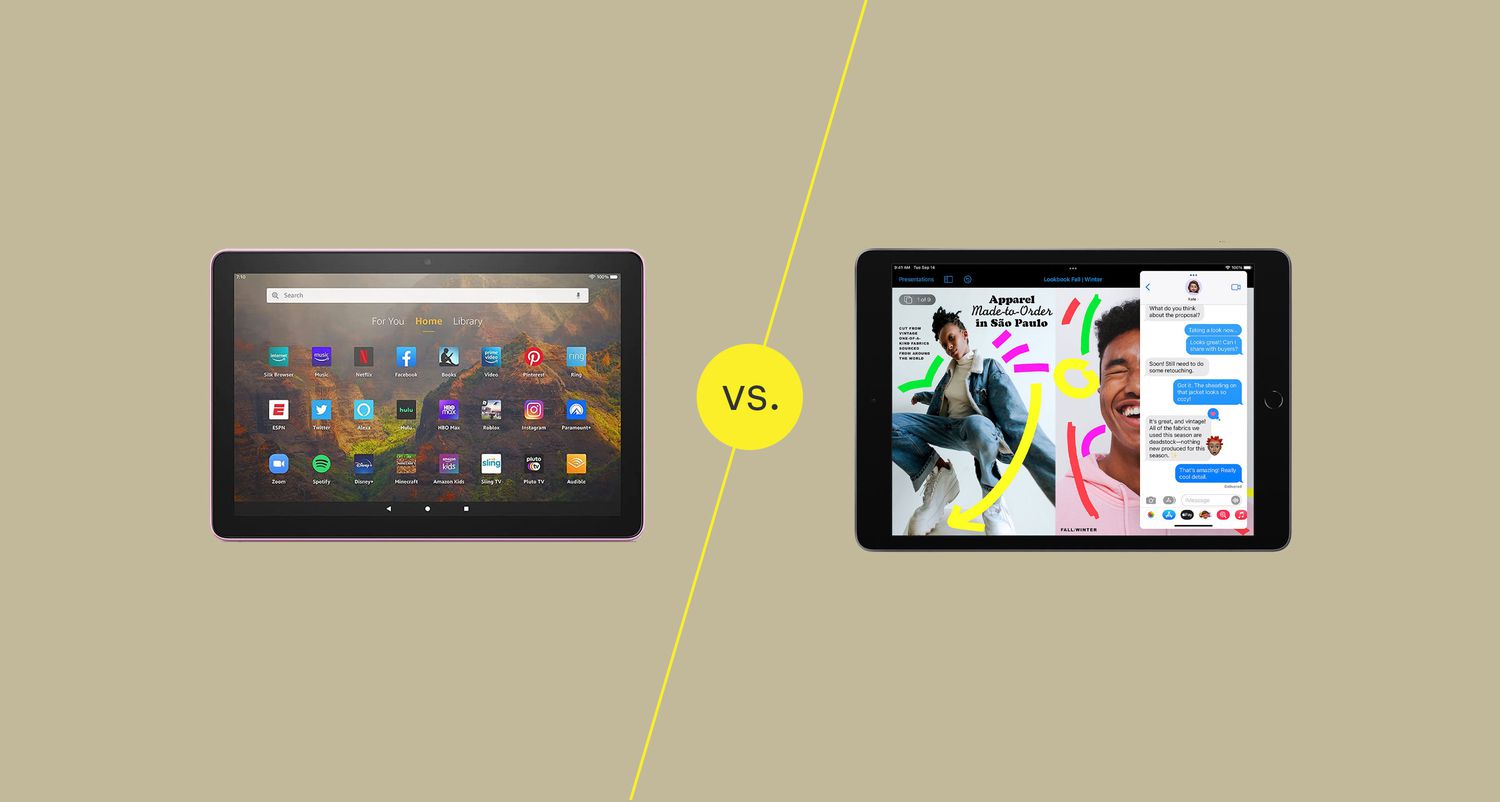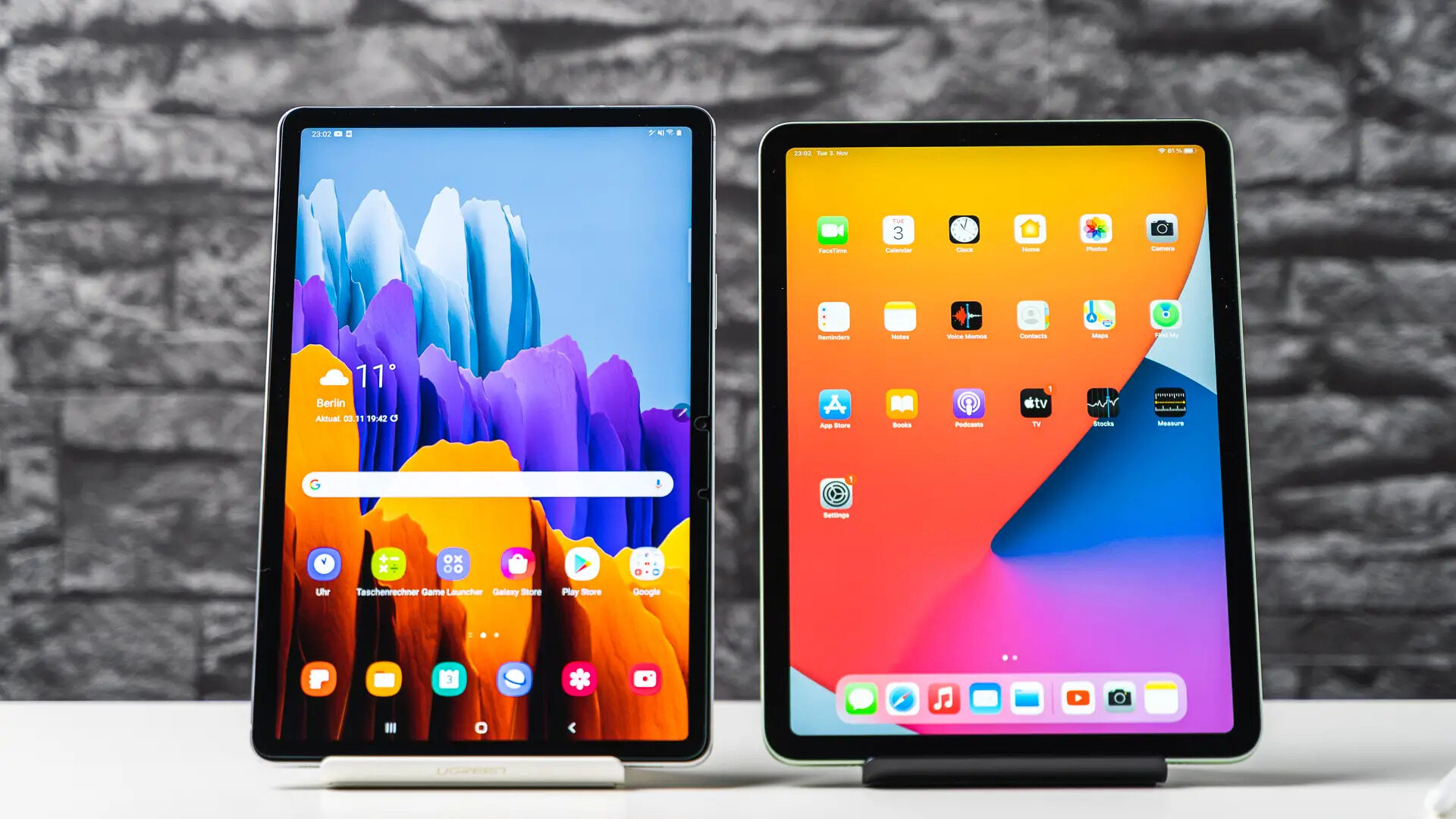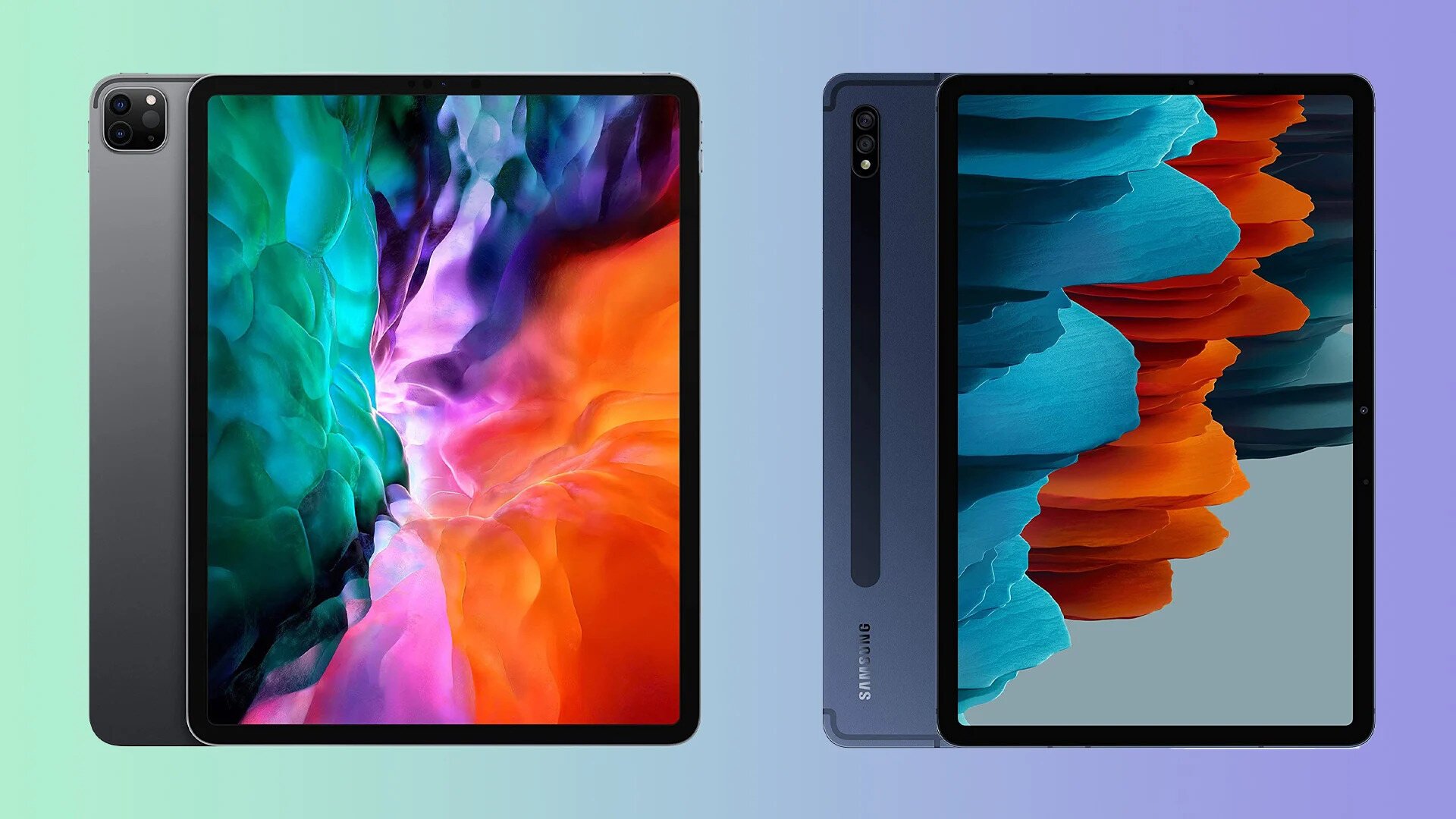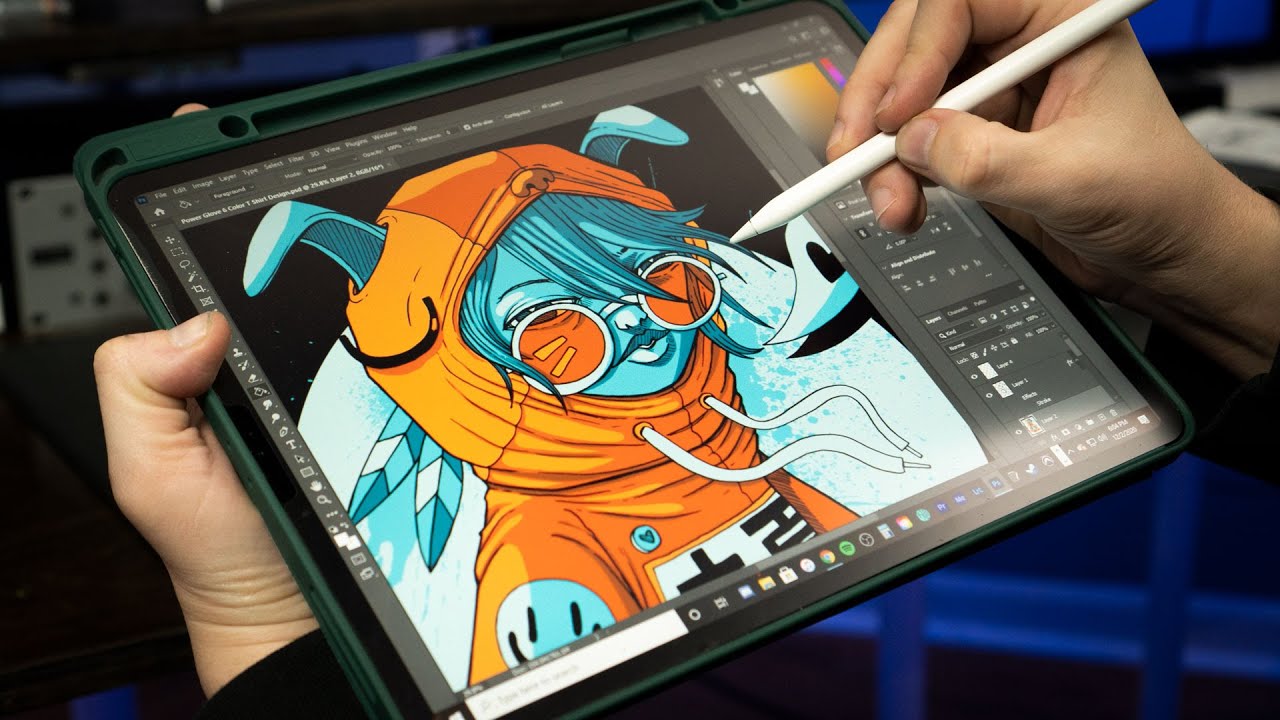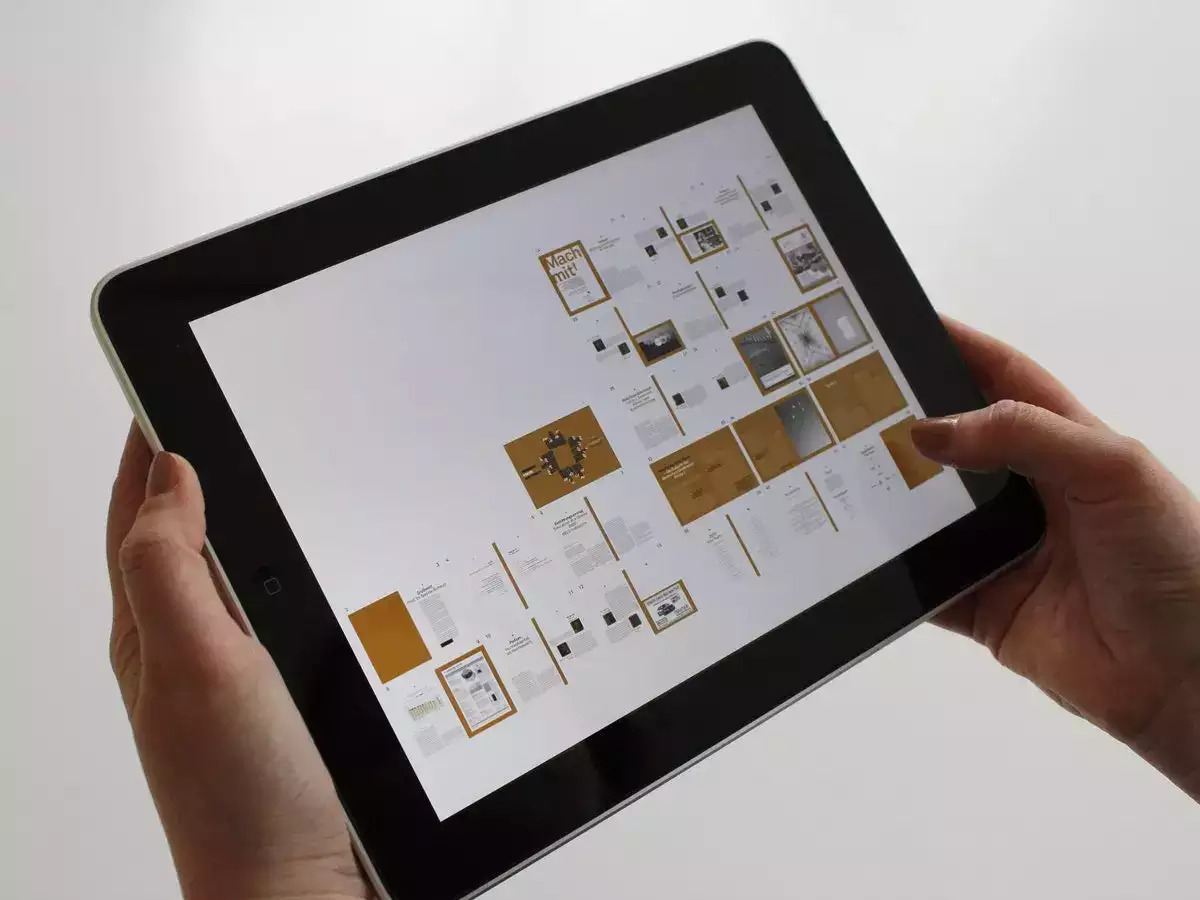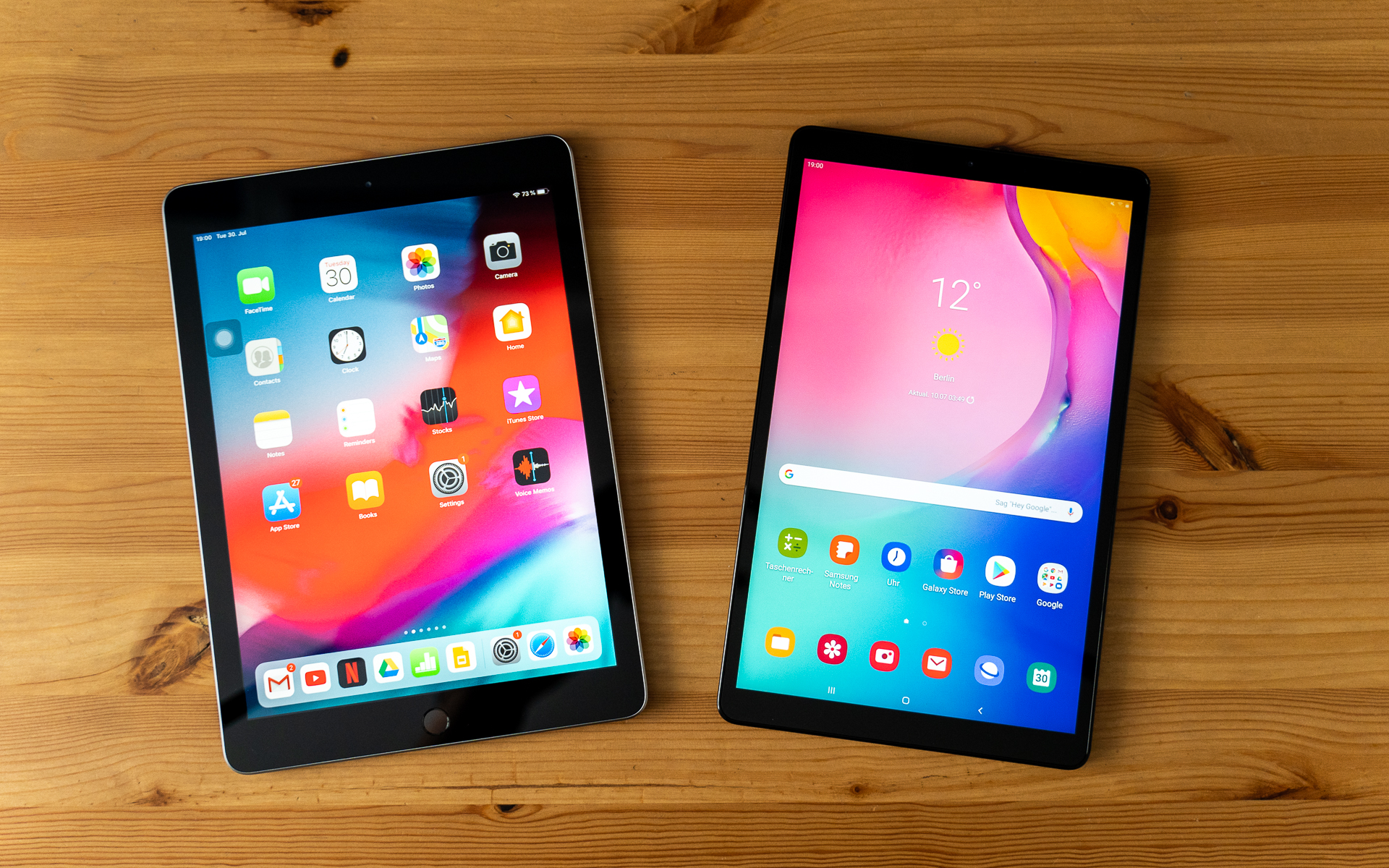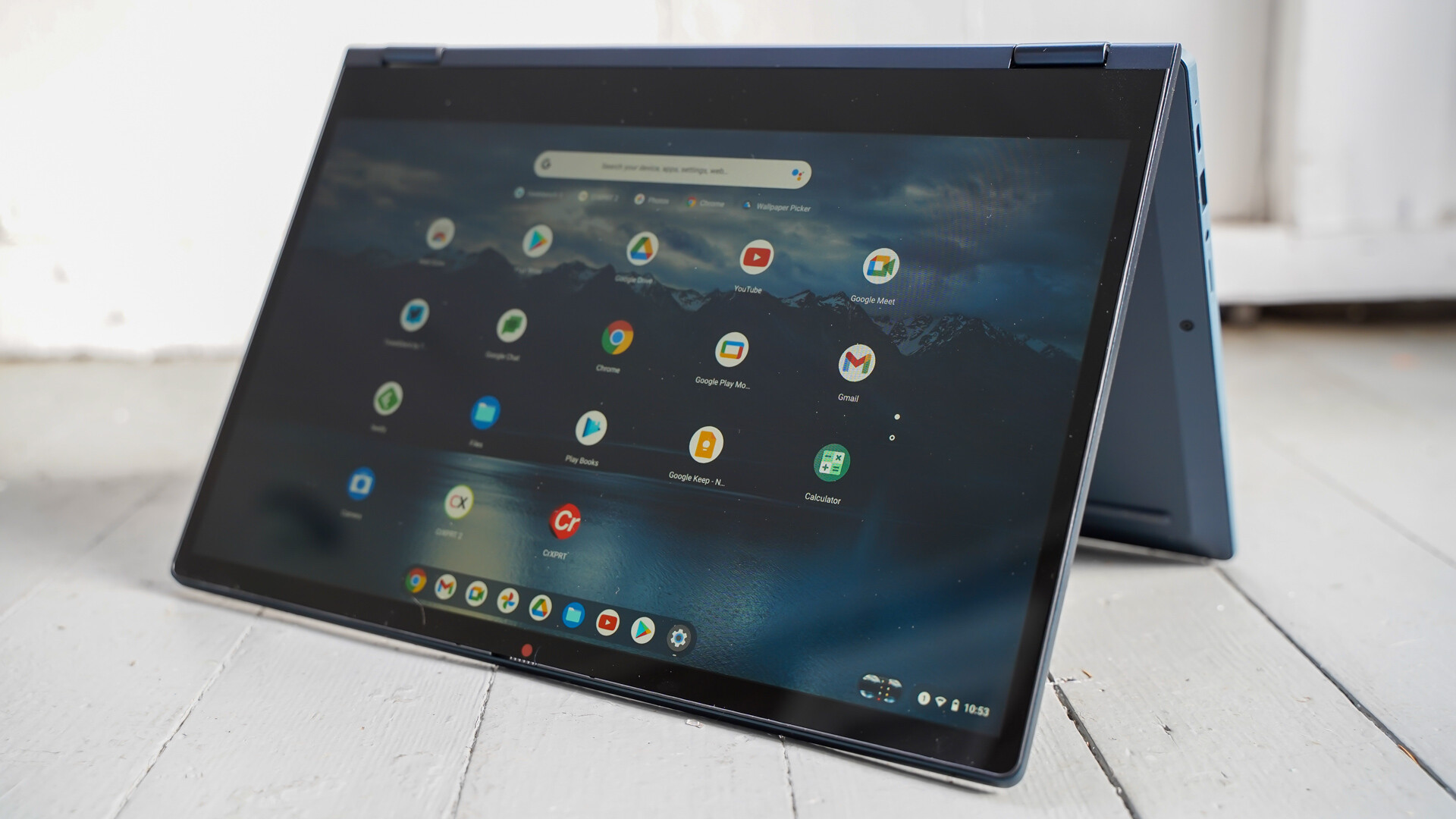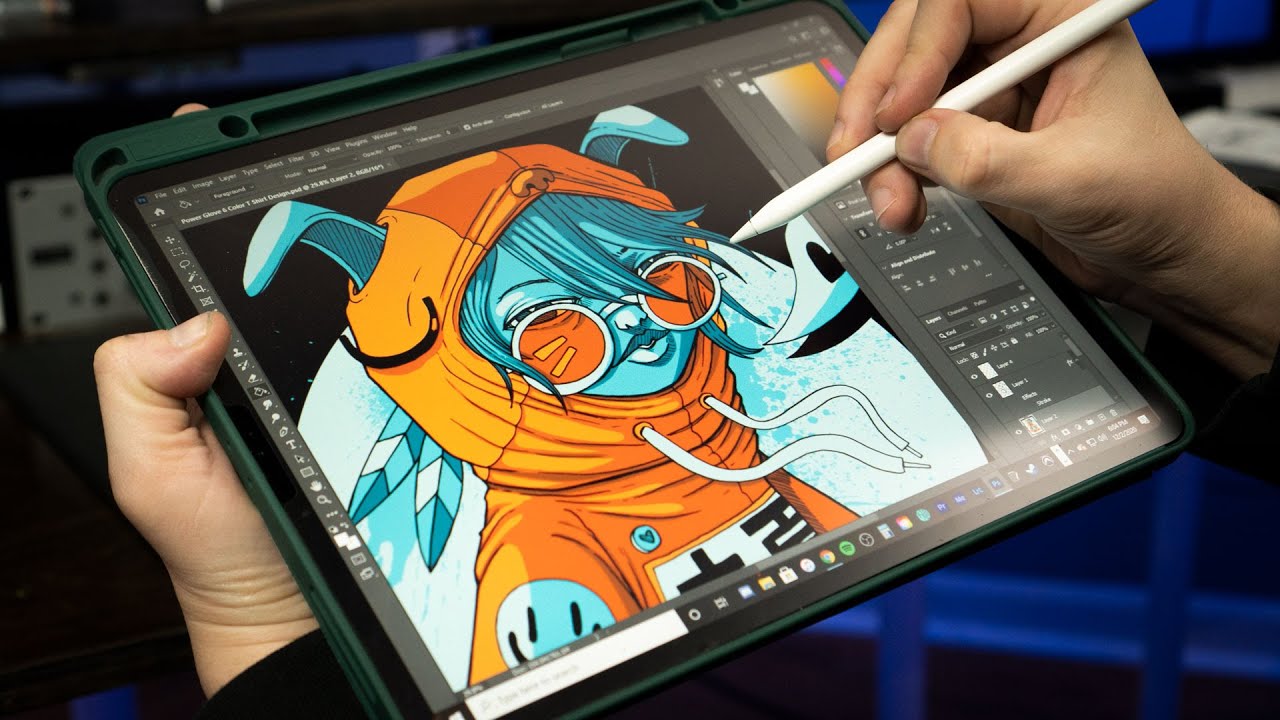Introduction
The Difference Between an iPad and a Tablet: Explained
When it comes to portable electronic devices, two commonly discussed options are the iPad and tablets. Both devices offer a range of features and functionalities that have revolutionized the way we work, play, and connect with others. However, many people often confuse the two terms or use them interchangeably. In this article, we will uncover the key differences between an iPad and a tablet, helping you make an informed decision when choosing the right device for your needs.
Before we delve into the specifics, it’s important to note that an iPad is a type of tablet. However, not all tablets are iPads.
Definition of iPad
The iPad is a line of tablets designed and marketed by Apple Inc. It runs on the iOS operating system, which is Apple’s proprietary software. The iPad offers a sleek and intuitive user interface, with seamless integration between hardware and software. Its design, performance, and extensive app ecosystem have made it a popular choice for individuals who value productivity, creativity, and entertainment in a portable device.
Definition of Tablet
A tablet, on the other hand, refers to a broad category of portable computing devices that feature a touch screen interface and are primarily designed for multimedia consumption, internet browsing, and productivity tasks. While iPads fall under the tablet category, tablets also include devices from various other manufacturers such as Samsung, Microsoft, and Lenovo, running on different operating systems such as Android, Windows, and Chrome OS.
Next, let’s examine some of the key distinguishing factors between iPads and tablets.
Definition of iPad
The iPad is a line of tablets designed and marketed by Apple Inc. It runs on the iOS operating system, which is Apple’s proprietary software. With its sleek and minimalist design, impressive performance, and extensive app ecosystem, the iPad has become synonymous with innovation and elegance in the world of mobile devices.
One of the standout features of the iPad is its user interface. The iOS operating system offers a seamless and intuitive experience, allowing users to navigate the device effortlessly with touch gestures and multi-touch capabilities. The iPad’s Retina display delivers stunning visuals, with vibrant colors and sharp details, making it ideal for watching movies, viewing photos, and playing games.
Furthermore, the iPad boasts powerful processors that can handle demanding tasks with ease. Whether you’re editing photos, creating art, or multitasking between several apps, the iPad’s performance is smooth and responsive. This makes it an excellent choice for professionals and creatives who rely on their devices to execute complex tasks efficiently.
Apple’s App Store is another standout feature of the iPad. With over a million apps designed specifically for the iPad, users can find a wide range of software tailored to their needs. From productivity apps for business professionals to educational apps for students, the diversity of available apps enhances the functionality and versatility of the iPad.
In addition, Apple offers a range of accessories that complement the iPad’s functionality. For example, the Apple Pencil enables precise handwritten notes and drawings, while the Smart Keyboard transforms the iPad into a productivity powerhouse, perfect for typing documents and emails on the go.
Lastly, the iPad’s seamless integration with the Apple ecosystem is a significant draw for many users. With features like iCloud, users can sync their files, photos, and notes across multiple Apple devices, ensuring a seamless and cohesive experience. Additionally, the iPad can interact with other Apple devices, such as iPhones and Mac computers, allowing for seamless communication and file-sharing.
In summary, the iPad is a premium and versatile tablet that offers a powerful combination of sleek design, impressive performance, and an extensive app ecosystem. Whether you’re a student, professional, or casual user, the iPad provides a user-friendly and immersive experience, making it an excellent choice for those seeking a top-of-the-line tablet.
Definition of Tablet
A tablet is a versatile mobile device that features a touch screen interface and is designed for various tasks, including multimedia consumption, internet browsing, and productivity. While the iPad is a well-known brand within the tablet category, there are also numerous other manufacturers that produce tablets running on different operating systems, such as Android, Windows, and Chrome OS.
One of the defining characteristics of tablets is their portability. Tablets are slim, lightweight, and easy to carry, making them ideal for on-the-go use. Their compact size allows users to comfortably hold them in one hand, making them convenient for tasks like reading, watching videos, or browsing the web.
Tablets offer a range of screen sizes to suit different needs. Smaller tablets, with screen sizes around 7 or 8 inches, are popular for their portability and ease of use, while larger tablets, with screen sizes of 10 inches or more, provide a more immersive experience for activities like gaming or content creation.
Another significant aspect of tablets is their operating system. Android tablets, for example, run on Google’s Android OS and offer flexibility and customization options. Windows tablets, on the other hand, provide a more desktop-like experience, with the ability to run full desktop applications. Chrome OS tablets focus on web-based applications and offer seamless integration with other Google services.
Tablets also come in a variety of price ranges, offering options for different budgets. Depending on the brand, specifications, and features, tablets can range from budget-friendly options to high-end premium models with advanced capabilities.
Additionally, tablets have various connectivity options, such as Wi-Fi, Bluetooth, and cellular connectivity. This enables users to stay connected to the internet, stream content, and access online services wherever they go. Some tablets even offer the option to insert a SIM card for mobile data connectivity.
Overall, tablets provide a portable and versatile computing experience that is suitable for a wide range of tasks and user preferences. Whether you’re using it for entertainment, work, or education, tablets offer the convenience of mobility combined with the power to perform various tasks on the go.
Operating System
The operating system (OS) is a fundamental component of both iPads and tablets that governs how the devices function and interact with users. The choice of operating system plays a significant role in determining the user experience, available apps, and overall functionality of the device.
iPads exclusively run on the iOS operating system, which is developed and maintained by Apple Inc. iOS offers a seamless, intuitive, and user-friendly interface designed specifically for the iPad. It provides a consistent experience across all Apple devices and offers tight integration with other Apple services like iCloud and Apple Music.
One of the distinguishing features of iOS on iPads is its extensive app ecosystem. The App Store is home to millions of apps, including both free and paid options, covering a wide range of categories such as productivity, entertainment, education, and gaming. Many developers prioritize developing apps for iOS, resulting in a vast selection of high-quality applications optimized for the iPad’s hardware and features.
On the other hand, tablets running on the Android operating system offer a more open and customizable experience. Developed by Google, Android OS provides greater flexibility in terms of customization options and allows users to personalize their device’s look and feel. Additionally, Android tablets have access to the Google Play Store, which offers a vast library of apps and games.
Windows tablets employ the Windows operating system, providing a more desktop-like experience. They can run full desktop applications, making them a suitable choice for users who require software compatibility and productivity tools typically found on traditional laptops or desktop computers.
Chrome OS, developed by Google, is another operating system found on tablets. Chrome OS emphasizes web-based applications and services, such as Google Docs and Google Drive. It provides a seamless integration with other Google services and offers a simplified and streamlined user interface.
Each operating system has its strengths, and the choice depends on individual preferences, specific needs, and familiarity. iOS on iPads offers a user-friendly interface, a vast array of optimized apps, and seamless integration with other Apple devices. Android provides customization options and a wider range of hardware choices. Windows tablets cater to users seeking a more traditional computing experience, while Chrome OS focuses on simplicity and web-based functionality.
In summary, the choice of operating system is a crucial factor when considering an iPad or tablet. Understanding the unique features, app availability, and user experience offered by iOS, Android, Windows, or Chrome OS will help you make an informed decision based on your specific requirements and preferences.
Manufacturer
When it comes to iPads, Apple Inc. is the exclusive manufacturer. Apple is known for its commitment to creating high-quality, innovative, and user-friendly products. The iPad’s sleek design, premium build quality, and attention to detail have helped establish it as an industry leader.
Apple’s meticulous approach to hardware and software integration ensures that iPads deliver a seamless and optimized user experience. From the selection of high-quality materials to the precise manufacturing processes, Apple strives to create a device that not only looks elegant but also feels premium in hand.
In addition to its focus on design and build quality, Apple has developed a reputation for its commitment to user privacy and security. iOS, the operating system powering iPads, includes advanced security features, robust data encryption, and frequent software updates to protect user data and provide a secure browsing experience.
On the other hand, the tablet market is more diverse, with numerous manufacturers offering a wide range of products. Some of the notable tablet manufacturers include Samsung, Microsoft, Lenovo, Asus, and Huawei, among others.
Samsung, a prominent player in the tablet industry, offers a variety of Android-based tablets that cater to different price points and user preferences. Samsung tablets are known for their vibrant displays, powerful processors, and impressive multimedia capabilities.
Microsoft, known for its Windows operating system, manufactures tablets that integrate seamlessly with their software ecosystem. Surface tablets, for example, provide a laptop-like experience with detachable keyboards and stylus support, ideal for productivity-focused users.
Lenovo is another leading manufacturer, offering a range of tablets running on Android and Windows. Lenovo tablets are known for their versatility, long battery life, and solid performance, making them a popular choice for both consumer and business users.
Asus and Huawei are known for their competitively priced tablets that offer a good balance of performance and affordability. These manufacturers often provide a variety of tablet options to cater to different market segments and user needs.
When considering a tablet, the choice of manufacturer can influence factors such as build quality, customer support, software updates, and brand reputation. It’s essential to evaluate the reputation and track record of the manufacturer to ensure a reliable and satisfying user experience.
In summary, Apple is the sole manufacturer of iPads, known for its commitment to design, quality, and user experience. In the broader tablet market, there are several manufacturers like Samsung, Microsoft, Lenovo, Asus, and Huawei, each offering unique features and catering to different user preferences and budgets. Understanding the reputation and strengths of different manufacturers can help you make an informed decision when choosing a tablet.
Screen Size
When it comes to screen size, both iPads and tablets offer a range of options to cater to different user preferences and needs. The screen size plays a crucial role in determining the overall user experience, whether it’s for media consumption, productivity, or gaming purposes.
iPads come in various sizes, including the compact iPad Mini, the standard-sized iPad, and the larger iPad Pro models. The iPad Mini typically has a screen size of around 7.9 inches, which offers a balance between portability and usability. The standard-sized iPad usually has a screen size of around 10.2 inches, providing a spacious display for multitasking and media consumption. The iPad Pro models offer larger screens, ranging from 11 to 12.9 inches, which are particularly well-suited for professional use and creative tasks.
Tablets from other manufacturers also come in a range of sizes to cater to different needs. Android tablets, for example, offer a wide variety of sizes, including compact 7-inch tablets, standard 10-inch tablets, and even larger models exceeding 12 inches. Windows tablets also come in a range of sizes, with options ranging from compact 8-inch tablets to larger 12-inch or even 15-inch models.
The screen size of tablets directly affects the user experience. A larger screen provides a more immersive and comfortable experience for activities such as watching movies, playing games, or working with multiple apps side by side. It allows for better visibility of content and enhances productivity, particularly for tasks that involve detailed work or document viewing.
On the other hand, smaller tablets are more portable and lightweight, making them convenient for users who are always on the move and prioritize portability. These smaller screens are still suitable for tasks like reading eBooks, browsing the web, or using apps that don’t require significant screen real estate.
When deciding on the screen size, it’s important to consider the intended use of the device. If you primarily plan to use the tablet for media consumption and multimedia activities, a larger screen may provide a more immersive experience. However, if portability is a priority or you mainly require basic tasks like web browsing and email, a smaller screen size may suffice.
In summary, both iPads and tablets offer a range of screen sizes to accommodate various user preferences and needs. From compact sizes for enhanced portability to larger screens for immersive experiences, choosing the right screen size depends on how you plan to use the tablet and your personal preferences.
Performance
When comparing the performance of iPads and tablets, several factors come into play, such as the processor, RAM, and the optimization of hardware and software integration. Performance directly affects the speed, responsiveness, and multitasking capabilities of the device, as well as its ability to handle resource-intensive tasks and applications.
iPads are renowned for their impressive performance, thanks to Apple’s meticulous hardware and software integration. Apple designs its own custom processors, such as the A-series chips, optimized specifically for their devices. These processors deliver remarkable speed, power efficiency, and graphics capabilities, providing a smooth and seamless user experience. Additionally, iPads typically feature ample RAM, allowing for efficient multitasking and the seamless switching between apps.
On the other hand, tablets from different manufacturers may vary in terms of performance. Android tablets offer a multitude of options, with varying degrees of performance depending on the device’s specifications and the level of software optimization. High-end Android tablets equipped with powerful processors and ample RAM can provide a smooth and responsive user experience. However, lower-end or budget-friendly tablets may not offer the same level of performance as their premium counterparts.
Windows tablets, powered by Intel processors, have the advantage of running full desktop applications. This makes them suitable for users who require more processing power for resource-intensive tasks such as video editing, graphic design, or running professional software. Additionally, Windows tablets often have a larger amount of RAM, allowing for smooth multitasking and efficient handling of demanding applications.
Chrome OS tablets generally offer good performance for web-based and lightweight applications. These tablets rely on cloud-based services and web apps, which do not typically require as much processing power as desktop applications. Chrome OS tablets often have modest specifications but still provide a responsive and efficient user experience for everyday tasks like web browsing, email, and document editing.
It’s essential to consider your specific needs and usage requirements when evaluating the performance of iPads and tablets. If you need a tablet for basic tasks such as web browsing, social media, and multimedia consumption, most tablets will provide satisfactory performance. However, if you require more powerful performance for tasks like gaming, content creation, or running advanced software, you might want to consider higher-end options or specific models known for their superior performance.
In summary, iPads are known for their impressive performance, thanks to Apple’s optimization of hardware and software. Other tablets’ performance can vary depending on the manufacturer, hardware specifications, and software optimization. It’s important to consider your intended use and performance requirements when choosing between different tablets.
Connectivity
The connectivity options available on iPads and tablets play a significant role in their versatility and usefulness, allowing users to stay connected, share data, and access various services. Let’s explore the different connectivity features commonly found on these devices.
Both iPads and tablets generally offer Wi-Fi connectivity, which allows users to connect to wireless networks and access the internet. With Wi-Fi connectivity, users can browse the web, stream content, download apps, and communicate with others through messaging or video calling applications. Wi-Fi connectivity is especially useful when you have access to a stable wireless network, such as at home, office, or public Wi-Fi hotspots.
Many tablets, including iPads, also offer cellular connectivity options. These devices come equipped with a SIM card slot, enabling users to connect to 3G or 4G/LTE networks provided by mobile carriers. Cellular connectivity allows users to access the internet and use online services even when Wi-Fi is not available. This feature is particularly useful for users who require constant connectivity on the go, such as frequent travelers or individuals who work in remote locations.
Bluetooth is another connectivity feature available on iPads and tablets. Bluetooth allows for wireless communication between devices in close proximity, typically within a range of 10 meters. It enables users to connect their tablets to Bluetooth-enabled accessories, such as headphones, speakers, keyboards, or wireless mice. Bluetooth connectivity enhances convenience and provides seamless interaction between the tablet and compatible devices.
Some tablets also offer additional connectivity options, such as NFC (Near Field Communication) and infrared (IR) blasters. NFC allows for contactless communication between devices and facilitates functionalities like mobile payments or transferring information by simply tapping devices together. IR blasters, on the other hand, enable tablets to act as universal remote controls for various home entertainment devices, such as TVs or set-top boxes.
An important consideration when choosing a tablet is the availability of ports. Many tablets, including iPads, feature a Lightning connector (or USB-C in the newer iPad Pro models) for charging and data transfer. USB-C ports offer faster data transfer speeds, compatibility with a wider range of accessories, and the ability to connect external devices like USB drives or monitors. Some tablets may also include additional ports, such as a microSD card slot or a headphone jack.
In summary, both iPads and tablets offer various connectivity options, including Wi-Fi and cellular connectivity, Bluetooth, and additional features like NFC or IR blasters. The availability of ports and the versatility of connectivity features can vary between different tablet models and manufacturers. Understanding your specific connectivity needs, such as constant internet access or compatibility with specific accessories, will help you choose a tablet that suits your requirements.
Purpose and Features
iPads and tablets are designed to serve a variety of purposes and offer a range of features that cater to different user needs. Let’s explore the common purposes and features found in these devices.
One of the primary purposes of iPads and tablets is multimedia consumption. These devices offer vibrant displays and immersive audio capabilities, making them ideal for watching movies, streaming TV shows, or listening to music. With their portable nature, tablets provide a convenient way to enjoy multimedia content on the go, whether during a commute or while relaxing at home.
Productivity is another key aspect addressed by iPads and tablets. With the ability to run productivity apps, tablets provide a platform for tasks like document editing, creating presentations, or managing calendars and emails. Many tablets offer features like split-screen multitasking, allowing users to work on multiple apps simultaneously for increased efficiency.
Creative professionals also benefit from the features offered by iPads and tablets. These devices often support the use of styluses, like the Apple Pencil or Samsung S Pen, enabling precise drawing, sketching, or note-taking. The availability of creative apps and software further enhances the tablet’s capabilities for artists, designers, and other creative individuals.
Tablets are versatile devices that cater to various educational needs as well. With educational apps and e-book readers, tablets can transform into interactive learning tools, providing access to a vast array of educational resources. Tablets are increasingly used in schools and classrooms to engage students and facilitate interactive and personalized learning experiences.
Communication and social connectivity are also key features of iPads and tablets. These devices allow users to connect with others through messaging apps, social media platforms, or video conferencing tools. Tablets offer a portable and user-friendly way to stay connected with friends, family, colleagues, and communities, enabling real-time communication and sharing of experiences.
Security features are also present in iPads and tablets. Fingerprint sensors or facial recognition technology provide an extra layer of security, ensuring that only authorized users can access the device. Tablets often include encryption and security measures to protect sensitive data, contributing to a more secure user experience.
Additionally, tablets offer a wide range of accessibility features to accommodate different user needs. These features include options for larger text sizes, color adjustments, assistive touch controls, and voice control, allowing individuals with disabilities to use tablets with ease and independence.
In summary, iPads and tablets serve various purposes and offer an array of features, including multimedia consumption, productivity tools, creative capabilities, educational resources, communication and social connectivity, security features, and accessibility options. Understanding your specific needs, whether it’s for leisure, work, education, or creativity, will help you choose a tablet that aligns with your desired purpose and features.
Price
Price is an important factor that plays a significant role when considering a purchase decision for iPads and tablets. These devices can vary widely in terms of price, offering options for different budgets and needs.
iPads, being a premium brand with a strong reputation for quality and performance, tend to be priced at the higher end of the spectrum. Apple’s tablets are known for their high build quality, seamless integration between hardware and software, and extensive app ecosystem. Premium iPad models, such as the iPad Pro, often come at a higher price point due to their advanced features, larger screens, and powerful processors.
On the other hand, tablets from various other manufacturers offer a range of prices to cater to different budgets. Android tablets, for example, offer options in multiple price tiers, from budget-friendly to mid-range and high-end models. The pricing often reflects the device specifications, build quality, and brand reputation. Budget-friendly tablets may offer decent performance for basic tasks, but higher-priced models tend to come with better displays, faster processors, and more storage capacity.
Windows tablets, which provide a laptop-like experience with full desktop compatibility, often come at a higher price point due to their advanced hardware and software capabilities. These tablets offer greater processing power and storage options, making them suitable for users who require more demanding tasks or professional software compatibility.
It’s important to consider the value proposition of a tablet when assessing the price. Factors such as the specifications, build quality, performance, and the availability of features and software ecosystem should be weighed against the price point. While higher-priced tablets generally offer better capabilities, budget-friendly options can still provide a satisfactory user experience for less demanding tasks.
It’s worth noting that the price of tablets can vary depending on the storage capacity, cellular connectivity options, and additional features like a stylus or keyboard. These additional features may contribute to a higher price but can enhance the overall functionality and productivity of the device.
Furthermore, considering the long-term value and potential for software updates should be taken into account. Apple’s iPads, for instance, tend to receive software updates for a longer period compared to some Android tablets, ensuring that the device remains compatible with the latest features and security enhancements over time.
Ultimately, the decision on the price of a tablet is a personal one, based on your budget, needs, and priorities. It’s advisable to research and compare different tablet models, taking into consideration the specific features, performance, and overall value that they offer at their respective price points.
In summary, iPads generally come with a higher price tag, reflecting their premium brand reputation, design, and performance. Tablets from other manufacturers offer various price points, catering to different budgets and needs. Considering the specifications, build quality, additional features, and long-term value are essential when assessing the price of a tablet and finding the right balance between cost and functionality.
Conclusion
After exploring the key differences between iPads and tablets, it is clear that while iPads are a type of tablet, they have unique features and characteristics that set them apart. iPads, with their sleek design, powerful performance, and extensive app ecosystem, have become symbols of innovation and elegance in the tablet market.
Tablets, in general, offer a range of options from various manufacturers, running on different operating systems to cater to different preferences and budgets. They provide versatility for tasks such as multimedia consumption, productivity, creativity, education, and communication.
When deciding between an iPad and a tablet, consider your specific needs and priorities. If you value a seamless user experience, access to a vast app ecosystem, and the Apple ecosystem integration, an iPad may be the optimal choice. On the other hand, if customization options, wider hardware choices, or compatibility with specific software are important to you, exploring other tablets may be a better fit.
Consider factors such as the operating system, manufacturer, screen size, performance, connectivity options, purpose, features, and price when making your decision. Understanding your preferences, usage requirements, and budget will help you select a tablet that aligns with your needs and enhances your overall user experience.
Remember, the right tablet for you is the one that suits your lifestyle, fulfills your requirements, and delivers the best value for your investment. Take the time to research and compare different tablets, read reviews, and consider your long-term needs to make an informed choice.
Whether you choose an iPad or a tablet, these devices offer incredible portability, functionality, and connectivity that have transformed the way we work, play, and connect with the world around us. Embrace the power of technology and enjoy the endless possibilities that iPads and tablets bring to your fingertips.







